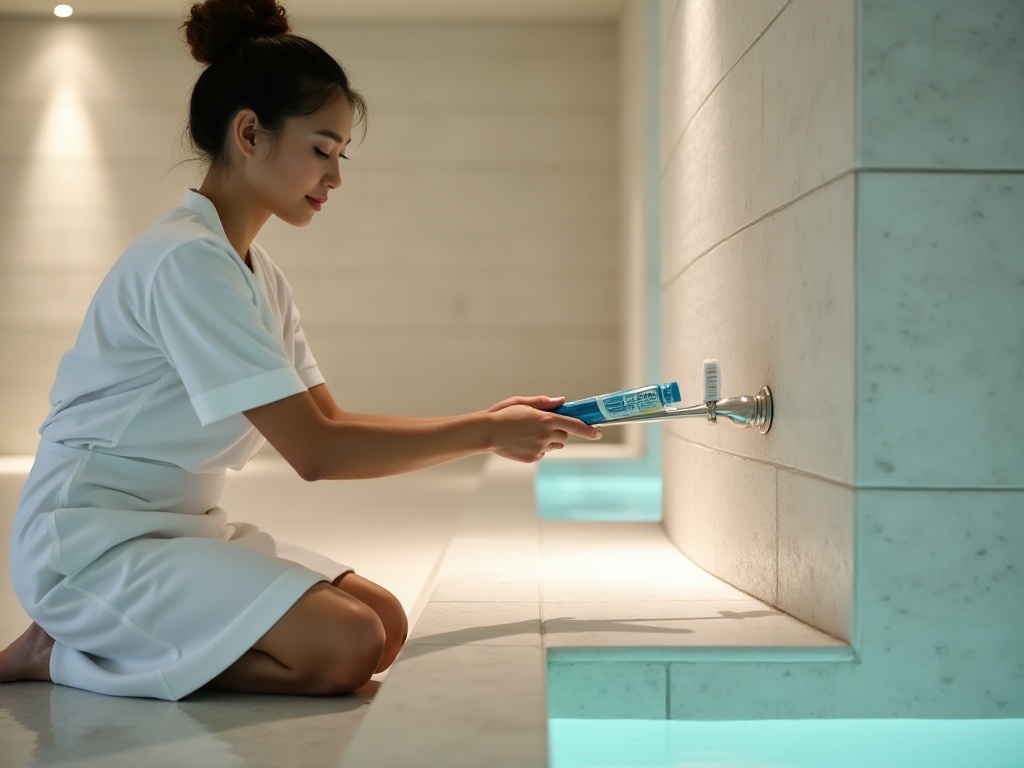Life is full of minor annoyances that, while not major problems, often cause us headaches. Whether it's stubborn residue on dishes that won't come off, not having a clip to seal half-eaten potato chips, or jar lids that are too tight to open... But don't worry, I've recently discovered some super practical household tips that are not only simple but will make you look clever in front of your friends.
Clever Uses for Coffee Filters
Life has its small troubles, like stubborn residue on dishes that won't come clean. But I recently discovered a trick - guess what? Coffee filters can solve this! You might ask, washing dishes with coffee filters? Yes, exactly! Here's how: First wet the coffee filter, then cover your hand with it and use it to wipe residue from dishes. Coffee filter fibers are very soft and can easily remove stuck-on food without scratching dish surfaces.
I've tried this trick myself. Once, I made a cheese sauce soup and couldn't get the hardened cheese sauce off the bowl. Usually, I'd have to soak the bowl for hours before washing. But I had a sudden inspiration and grabbed a coffee filter, moistened it, and with a gentle wipe, that stubborn cheese sauce came right off - it was truly magical. I remember laughing and telling my friends, "See, no more soaking dishes!" They were all amazed at how simple and effective this trick was.
Coffee filters aren't just for washing dishes - they can also be used to clean small crevices like around electronics or window frames. Their fine fibers don't leave residue behind, making them great for cleaning delicate equipment. They're especially useful for cleaning precious items like camera lenses and screens, ensuring spotless results without leaving marks.
Plus, coffee filters are highly absorbent, perfect for soaking up spilled liquids like coffee or water on tables, preventing liquid from seeping into surfaces or documents. I remember once accidentally spilling tea on my desk - I immediately grabbed a coffee filter and quickly absorbed the tea, avoiding a bigger mess.
Moreover, coffee filters can be used to strain fine particles. For instance, when making juice, pulp or seeds often get mixed in - filtering through a coffee filter gives you pure juice. They're also useful for straining soups when you need to remove impurities to keep the broth clear.
In short, coffee filters have many clever uses around the home, not just for solving dish-washing problems but also for cleaning, absorbing liquids, and filtering. Next time you encounter similar issues, try using a coffee filter and see if it helps solve your problem.

Hair Straightener Sealing Technique
Have you ever been in this situation: you're halfway through a bag of chips and want to reseal it, but can't find a clip? Here's a super useful trick: Here's how - fold over the open part of the bag, then use a hair straightener to clamp the folded portion, heat it briefly, and the plastic will fuse together, creating a tight seal.
Imagine eating a bag of chips, getting halfway through, and not wanting to finish them all but also not wanting them to get stale. That's when you can use a hair straightener to seal them. This method keeps chips fresh longer, saving you from needing clips and solving the problem of not having any.
I remember once in my dorm room, I was eating chips and couldn't finish them, but couldn't find a clip. There weren't any clips in the dorm, and I didn't want to waste food. Then I had a bright idea and thought of using my hair straightener. Hair straighteners are usually hot, and when used to heat the bag's edge, the plastic quickly fuses together, creating a secure seal. This not only solved my chip storage problem but amazed my roommates, who all said this method was incredible.
Actually, hair straighteners have many more uses beyond sealing bags. They can be used to iron small areas of clothing, like collars or cuffs that are hard to iron normally. Hair straighteners offer precise temperature control and won't damage clothes like traditional irons might, making them perfect for detailed work.
Additionally, hair straighteners can remove wrinkles from small items. For example, paper or fabric that's become creased from long-term storage can be smoothed out with gentle heat from a hair straightener. This trick is especially useful when preparing important documents or display items to ensure they look presentable.
Another interesting use is in DIY crafts, where hair straighteners can be used to fuse plastic materials. For instance, when making small decorative items that require joining plastic pieces, a hair straightener can heat the edges to create a strong bond without needing extra adhesive.
So, hair straighteners aren't just for styling hair - they have wide applications in household life. Next time you need to temporarily seal something or iron small items, try using a hair straightener and see if it solves your problem.
The Magic of Rubber Bands
Opening jar lids is a common challenge in daily life, especially very tight ones like pickle jars. Here's a simple method: wrap a rubber band around the lid, then twist. The rubber band increases grip, making it easier to turn the lid.
I remember buying a jar of pickles once and couldn't open it no matter what. I tried various methods, but the lid wouldn't budge. Finally, I wrapped a rubber band around the lid, gave it a gentle twist, and it opened right up. This not only solved the problem but made me look clever in front of my friends.
Actually, rubber bands have many more clever uses around the home. For instance, they can be used to hold materials in place when doing crafts. During small DIY projects, rubber bands can substitute for glue or tape, temporarily holding pieces that need to be bonded, making adjustment and assembly easier.
In the kitchen, rubber bands are very useful. They can bundle messy cords from rice cookers or induction cookers, preventing tangling and making storage easier. They can also stabilize bottles that tend to tip over, like vinegar or soy sauce bottles, preventing accidental spills.
Rubber bands can also adjust furniture stability. For instance, if a table or chair has one slightly short leg, wrapping rubber bands around it can add height and maintain balance. I remember once when my table had an uneven leg causing it to tilt - I wrapped some rubber bands around it and solved the problem.
In gardening, rubber bands are a gardener's friend. They can secure plants, preventing them from tilting or falling over during growth. They're especially useful for plants needing support, as the soft material won't damage plant stems like rope might.
Furthermore, rubber bands can be used for simple home decoration. For example, wrapping rubber bands around a lampshade can create unique lighting effects, adding interest and creativity to a room. Or when doing small furniture modifications, rubber bands can secure small components, ensuring stability during alterations.
So rubber bands aren't just office supplies - they have broad applications in household life, solving many problems we might normally overlook. Next time you encounter similar troubles, try using rubber bands and see if they can help solve your problem.

Household Maintenance Tips

Vinegar and Baking Soda for Drain Cleaning
Is your drain often clogged? This not only affects daily life but can also cause odors. Here's how: First pour half a cup of baking soda down the drain, then add half a cup of vinegar. Let it react for about 15 minutes, then flush with hot water. The chemical reaction between baking soda and vinegar creates bubbles that help remove dirt and hair from pipes.
My bathroom sink was draining slowly recently, so I tried this method. The results were very satisfying - not only did the drainage speed improve, but the odors disappeared too. I think this technique is very useful and can be applied to any household drainage system - it's simple and environmentally friendly.
This method isn't just eco-friendly, it's also economical. Baking soda and vinegar are common kitchen ingredients, so you don't need to buy special cleaners. Their chemical reaction not only clears clogs but also eliminates drain odors, keeping pipes clean.
I remember once when my kitchen sink was draining noticeably slower. I tried this method - first adding baking soda, then vinegar, which immediately created lots of bubbles. After 15 minutes and a hot water flush, the drainage speed clearly improved and the odors disappeared. The whole process was quick and simple, requiring no special tools - it was really impressive.
Besides cleaning drains, this method can also clean small household appliances. For example, coffee pots or teapots often accumulate scale from long-term use - soaking them in a vinegar and baking soda mixture can easily remove stubborn scale and restore their cleanliness.

Using Toothpaste to Clean Tile Grout
Yellowed or blackened tile grout is a common household annoyance. But there's a simple trick to solve this problem. The method is simple: use an old toothbrush with toothpaste to scrub along the grout lines, then rinse clean with water. The tiny particles in toothpaste help remove dirt and restore the grout's original color.
My bathroom tile grout had yellowed from long-term moisture and mold. Many cleaners didn't work, but using toothpaste produced amazing results. The grout returned to its clean white color - it was really surprising.
Toothpaste isn't just for cleaning teeth - its mild abrasive action is also very effective for household cleaning. I remember once when my bathroom grout had turned black, and nothing seemed to work. Finally, I tried toothpaste with an old toothbrush, and easily restored the original white color - it was an unexpected success.
Plus, toothpaste isn't just limited to cleaning grout - it can clean stains from small items like white shoes or silverware. The tiny particles in toothpaste can remove surface dirt without damaging the item's surface. I remember once when my white shoes had stubborn stains - after cleaning with toothpaste, the stains were easily removed and the shoes were white again.
Toothpaste can also clean electronic devices, like fingerprints and oil on phone screens. Gently wiping with toothpaste not only removes stains but restores screen brightness without leaving scratches.

Lemon for Cleaning Microwaves
Stains and odors inside microwaves are always difficult to clean. Here's how: Put water in a microwave-safe bowl, add a few lemon slices, then heat for 3-5 minutes. The steam will soften dirt, while the lemon scent freshens the air.
I remember once heating pasta in the microwave, and sauce splattered everywhere. I tried this method - the steam softened the dirt, and with just a light wipe, the microwave was clean again, plus the whole room filled with a fresh lemon scent - it was a pleasant surprise.
Lemons aren't just for cleaning microwaves - their acidic properties can remove scale and stains from various appliances. For example, lemon juice can easily remove scale from inside coffee pots.
I remember once when my electric kettle had accumulated lots of scale - I boiled some lemon slices in it, and the scale quickly dissolved, making the kettle clean again. The lemon scent also filled the kitchen with fresh air - a double benefit.
Lemons' cleaning power extends to other areas too - lemon juice can clean kitchen counters, removing grease and dirt while leaving a light lemon scent. Or when cleaning rusty metal items, wiping with lemon juice can remove rust and restore the metal's shine.
In conclusion, these household tips are not only simple but highly effective. They can solve daily annoyances and make you look clever in front of friends. I hope you'll try these tricks in your daily life to make it more convenient and interesting. Remember, life's small troubles often have unexpectedly simple solutions. Next time you face similar issues, why not try these tips and see how they work?
Related articles




